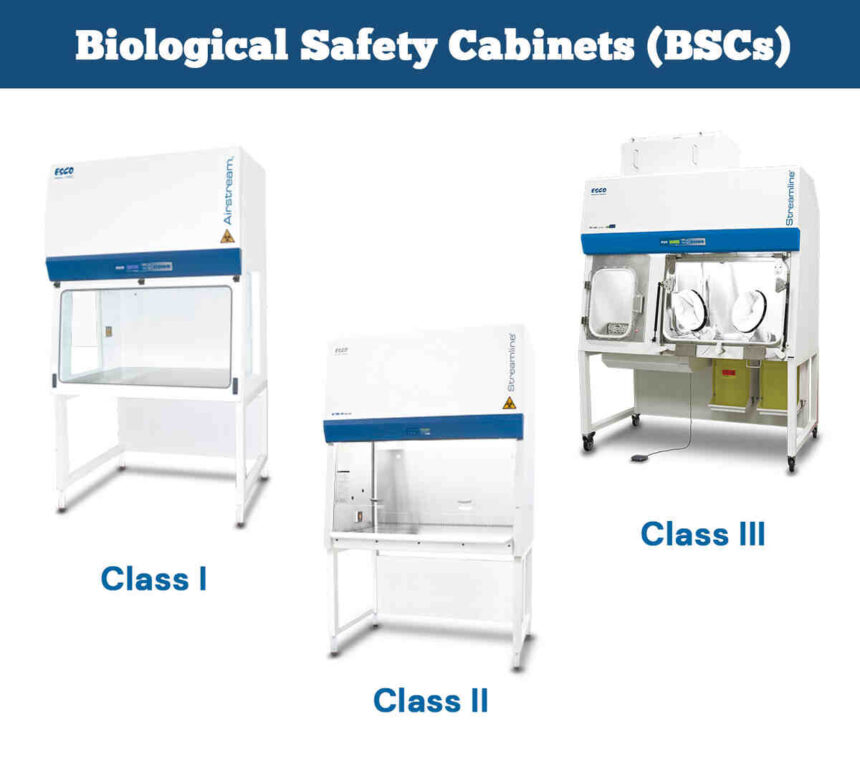In laboratory and hospital environments, safety and precision are paramount. A biosafety cabinet (BSC) is an essential piece of equipment, designed to protect users, the environment, and experiments from potentially harmful biological agents. Selecting the right BSC is not just a matter of preference but of necessity, ensuring proper containment and compliance with health and safety regulations. This article provides an in-depth look at how to choose the best biosafety cabinet for your lab, focusing on the specific needs of laboratory and hospital settings – https://roland.co.id.
Understanding Biosafety Cabinets
Biosafety cabinets are specialized enclosures used to work with infectious agents, chemicals, and other hazardous materials in a controlled environment. These cabinets are categorized based on the level of containment they provide and the type of work they are designed for. The key purpose of a BSC is to provide a physical barrier between hazardous materials and the outside environment, while maintaining airflow patterns that minimize contamination.
There are three main classes of biosafety cabinets:
Class I: Provides protection for the user and the environment but does not protect the materials being worked on.
Class II: Offers protection for both the user, the environment, and the materials. These are commonly used for work involving low- to moderate-risk biological agents.
Class III: The highest level of protection, providing a sealed environment for working with highly hazardous materials, often used in containment laboratories.
Understanding these classes helps determine which BSC is suitable for your lab’s specific needs.
Factors to Consider When Choosing a Biosafety Cabinet
1. Type of Work and Biological Risk
The first consideration when choosing a biosafety cabinet is the type of work that will be conducted. Different BSCs are suited for various levels of containment. For laboratories dealing with agents of varying levels of risk, Class II biosafety cabinets are typically ideal. However, high-security facilities dealing with dangerous pathogens may need the superior containment offered by Class III cabinets.
It’s crucial to assess the biological agents you’ll be working with and choose a cabinet that provides appropriate protection. For example, if your work involves handling specimens that may contain pathogens, a Class II Type B2 cabinet with a ducted exhaust system may be necessary for additional safety.
2. Airflow Configuration
Biosafety cabinets rely on precisely controlled airflow to create a sterile environment. Airflow in a BSC is divided into three primary zones:
Inflow Air: Protects the user by drawing air into the cabinet.
Downflow Air: Protects the sample by creating a sterile work surface.
Exhaust Air: Disposes of contaminants and ensures air does not recirculate into the lab.
It is essential to choose a biosafety cabinet with an airflow configuration that suits your laboratory’s needs. For example, Type A cabinets recirculate 30% of the exhaust air, while Type B cabinets expel all exhaust air, making them suitable for handling volatile chemicals.
3. Size and Space Considerations
The physical space available in your laboratory or hospital will dictate the size of the biosafety cabinet. Consider how much workspace you need for your experiments, and whether the cabinet will be used in conjunction with other equipment. Selecting the right size guarantees the safety and effectiveness of your operations.
In addition, many labs use Laboratory ESD Furniture (electrostatic discharge furniture) to protect sensitive electronics, and it’s essential to ensure that the biosafety cabinet integrates well with these types of furniture and other devices. Proper alignment of the cabinet with the layout of the room and other lab equipment is critical for operational effectiveness.
4. Filtration System
The filtration system is another important feature of biosafety cabinets. High-Efficiency Particulate Air (HEPA) filters are commonly used in biosafety cabinets to trap airborne particles, ensuring that harmful microorganisms and toxins do not escape into the environment. A good filtration system prevents cross-contamination and protects both personnel and samples.
Class II biosafety cabinets generally feature dual HEPA filters for the intake and exhaust air. These filters should be replaced periodically, depending on the frequency of use and the type of materials handled, to maintain proper containment.
5. Maintenance and Serviceability
Regular maintenance of your biosafety cabinet is vital to ensuring its long-term performance. Choose a BSC from a reputable manufacturer known for providing comprehensive maintenance services. Some cabinets come with built-in diagnostic systems that allow users to easily check airflow and filter status, which can save time during routine checks.
Additionally, opting for a model with easily accessible components makes the maintenance process smoother, reducing downtime and minimizing disruption to your lab’s operations.
6. Compliance with Standards
Biosafety cabinets must meet several regulatory standards to ensure safe operation. These include certifications from the National Sanitation Foundation (NSF) and compliance with guidelines from the Centers for Disease Control and Prevention (CDC) or World Health Organization (WHO). When selecting a biosafety cabinet, ensure it meets local and international standards for biological safety and environmental protection.
Conclusion
Selecting the right biosafety cabinet for your lab requires careful consideration of various factors, including the type of work being conducted, the level of biological risk, the available space, and the filtration system. By understanding your laboratory’s specific needs and ensuring that the cabinet is compatible with other lab equipment such as Laboratory ESD Furniture, you can provide a safe and effective working environment for your team.
When investing in a biosafety cabinet, prioritize safety, quality, and ease of maintenance. By making informed decisions, you not only protect your staff and environment but also enhance the efficiency and reliability of your laboratory operations.

